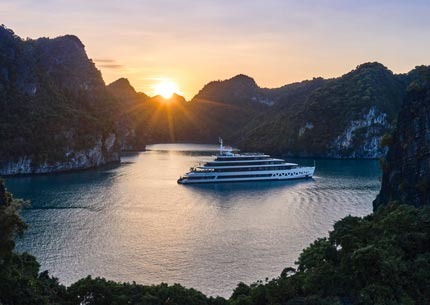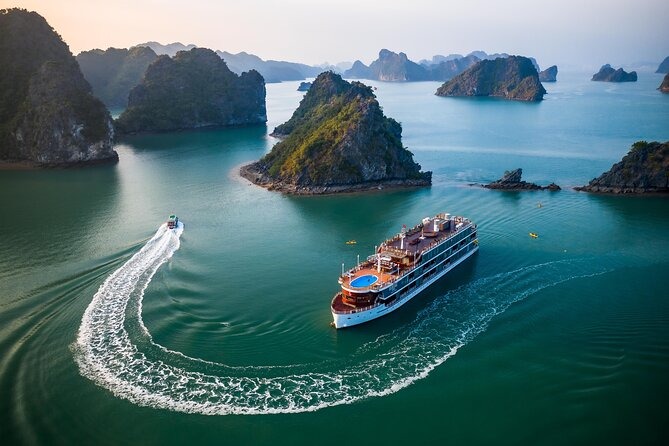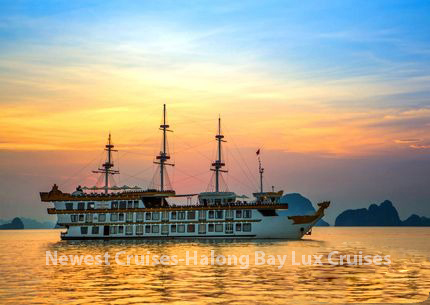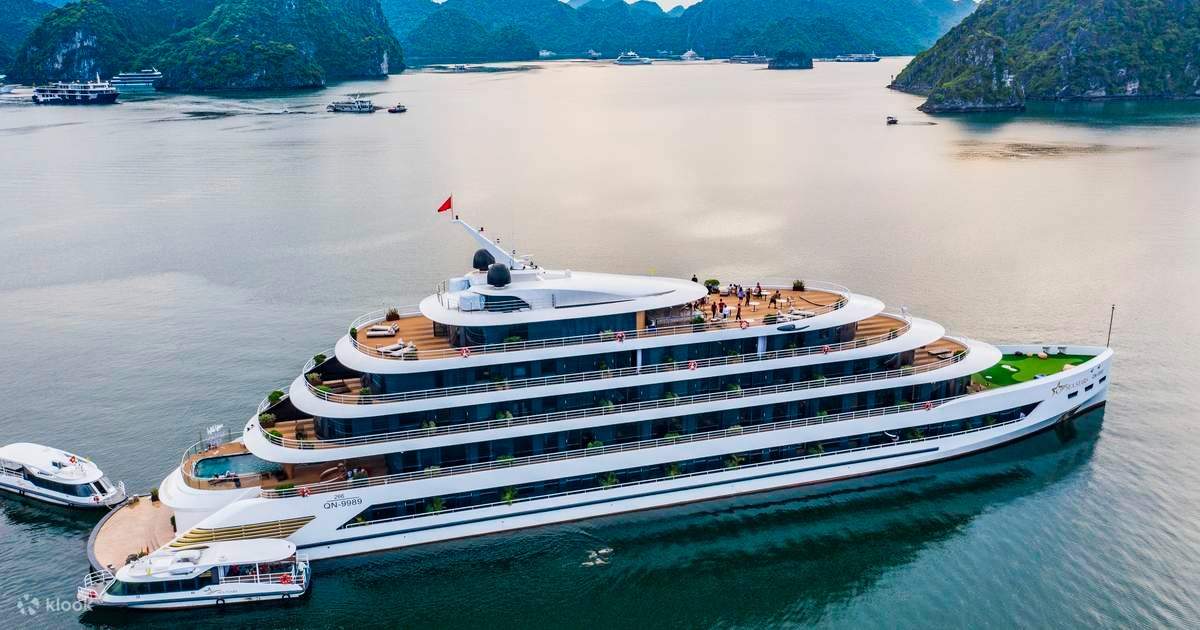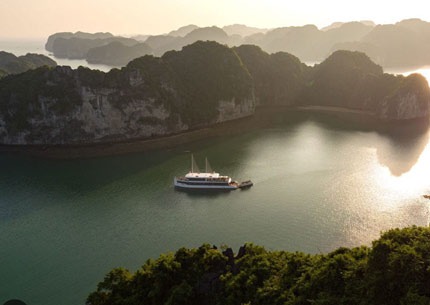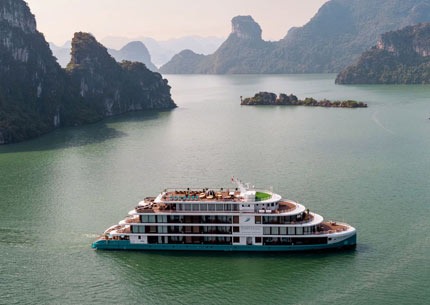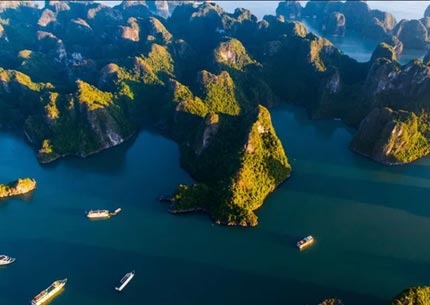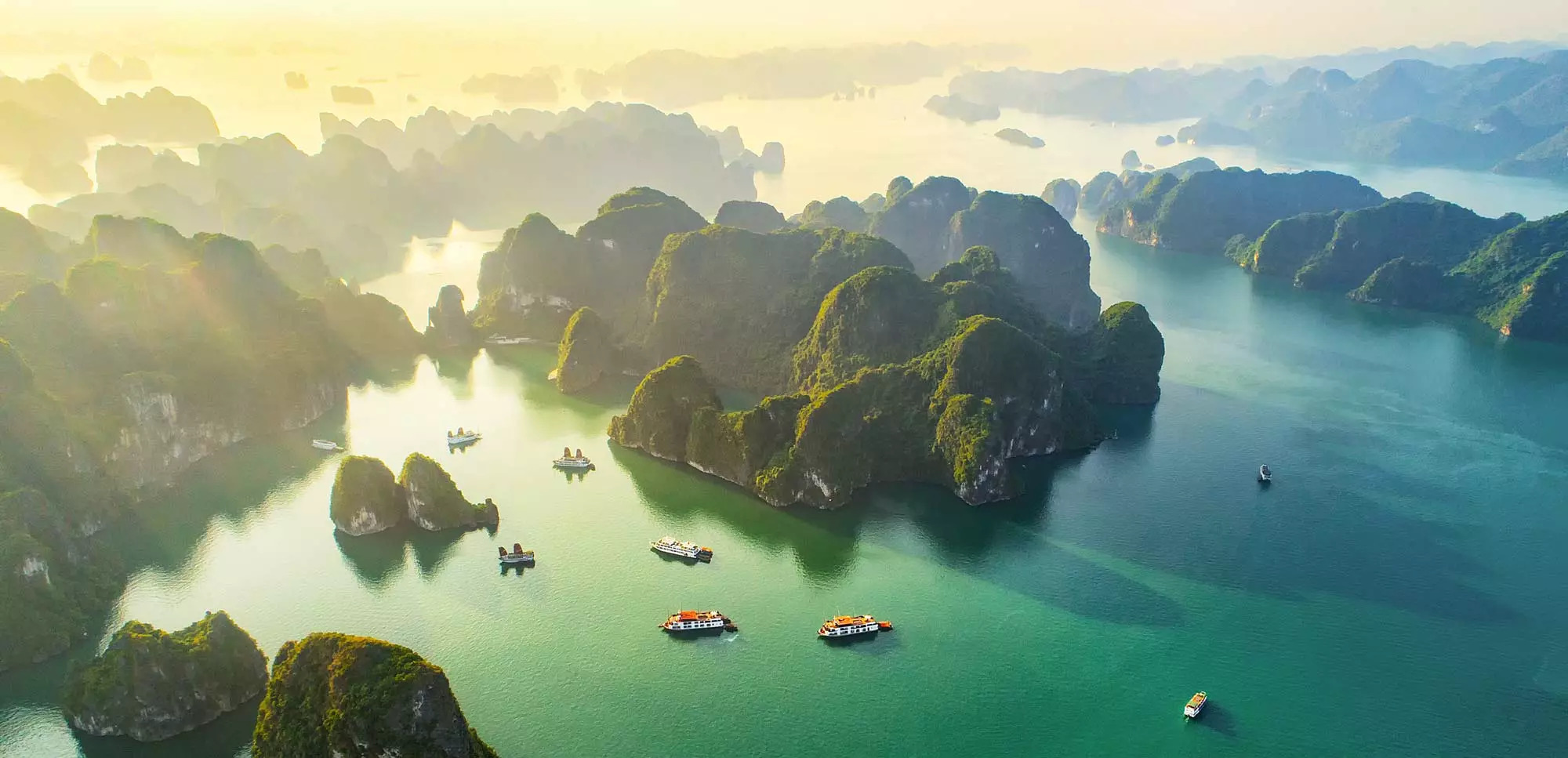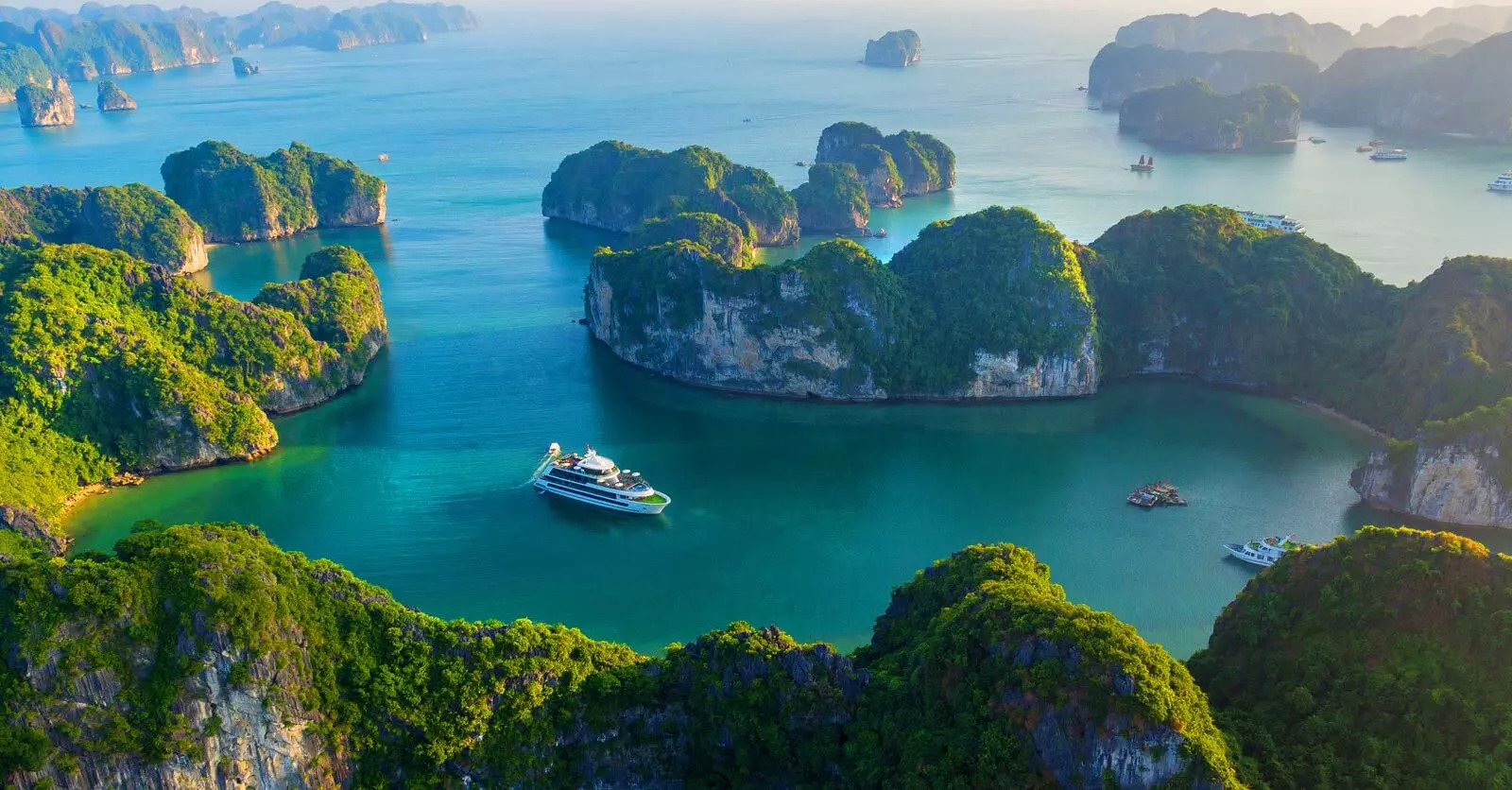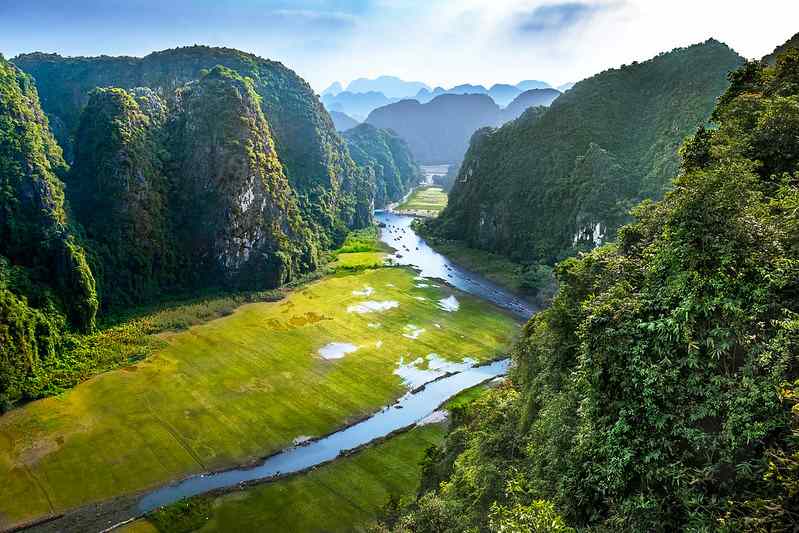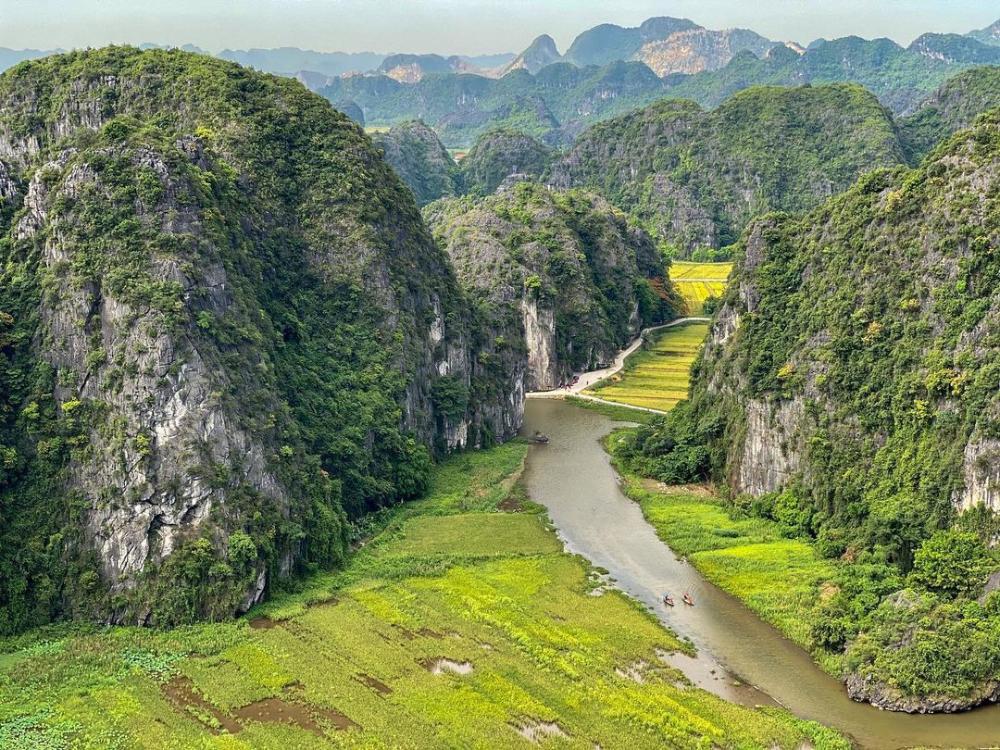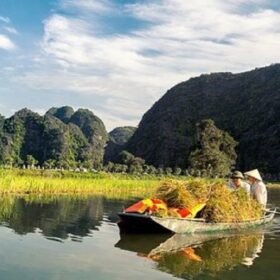7 Worst Times to Visit Ninh Binh in 2025-2026: Weather Guide & Alternatives
Planning a trip to Vietnam’s hidden gem? Understanding the worst time to visit Ninh Binh can save your vacation from unexpected weather disruptions. Our comprehensive 2025 guide reveals when to avoid Ninh Binh, what to pack for each season, and the perfect months to experience this “Halong Bay on Land” at its most breathtaking.
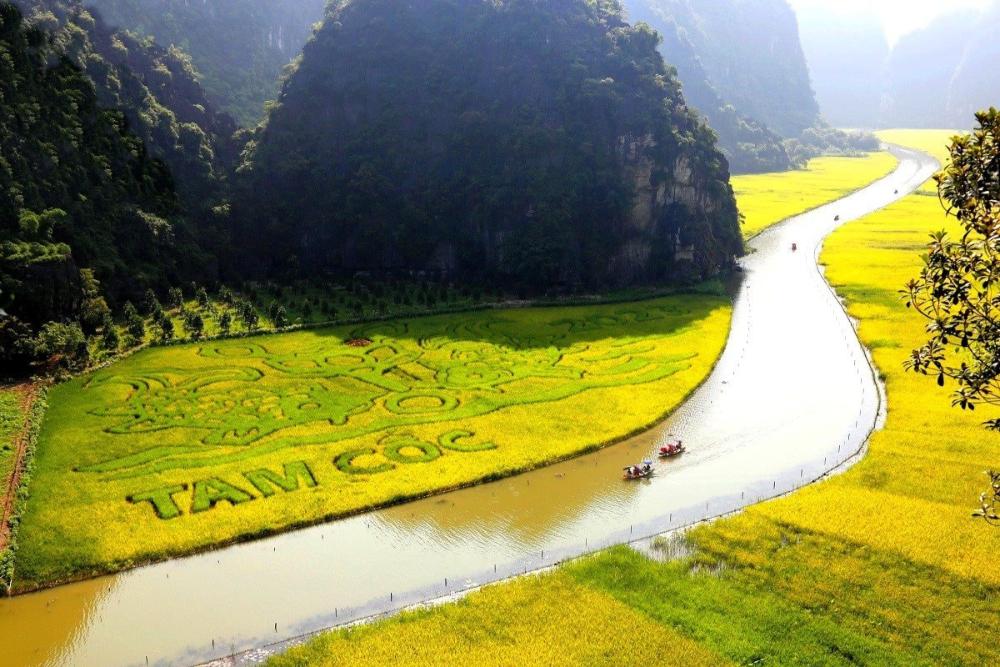
Understanding Ninh Binh’s Unique Climate Patterns in 2025-2026
Ninh Binh, situated in northern Vietnam, experiences a subtropical climate with four distinct seasons. Before planning your journey, understanding these weather patterns is essential for a memorable experience.
Seasonal Weather Breakdown: What to Expect
- Spring (March-April): Temperatures range from 20-28°C (68-82°F) with moderate humidity around 75-80%. The landscape comes alive with vibrant greenery and blooming flowers, particularly in late March when the rice paddies turn a brilliant emerald green.
- Summer (May-August): This period brings intense heat with temperatures frequently reaching 32-38°C (90-100°F). Humidity soars to 85-90%, creating a sweltering environment that can feel significantly hotter than the actual temperature. July receives the highest rainfall, averaging 330mm, with frequent afternoon downpours lasting 1-3 hours.
- Autumn (September-October): Considered the golden season in Ninh Binh with temperatures cooling to 22-27°C (72-81°F) and humidity dropping to a more comfortable 70-75%. The rice fields turn golden yellow, creating spectacular photo opportunities across the countryside.
- Winter (November-February): Temperatures drop significantly to 10-20°C (50-68°F), with occasional cold spells bringing lows of 8-9°C (46-48°F). The region experiences a unique misty atmosphere, especially in the early mornings, with humidity ranging from 80-85%.
7 Worst Times to Visit Ninh Binh in 2025: Months to Avoid
Knowing when not to visit is just as valuable as knowing the best times. Here are the specific periods to reconsider for your Ninh Binh adventure:
1. Peak Monsoon Season (Late July to Early August)
July and early August 2025 will likely be the absolute worst time to visit Ninh Binh. This period marks the height of the monsoon season, with rainfall exceeding 330mm in July alone. Daily downpours typically last 2-3 hours, primarily occurring in the afternoons between 2-5 PM.
The excessive rainfall creates significant challenges:
- Boat tours in Tam Coc and Trang An may be canceled due to high water levels
- Flooding on rural roads can disrupt transportation to key attractions
- The iconic limestone karsts are often shrouded in mist and rain clouds, limiting visibility and photo opportunities
2. Extreme Heat Period (Late May to June)
Late May through June brings scorching temperatures regularly exceeding 35°C (95°F) with humidity levels of 85-90%. The heat index frequently reaches 42-45°C (108-113°F), making outdoor activities extremely uncomfortable.
During this period:
- The intense heat makes hiking to viewpoints like Mua Cave challenging
- Boat rides through Tam Coc become uncomfortable without adequate sun protection
- The midday heat (11 AM – 3 PM) is often too intense for exploring the ancient capitals and temples
3. Late August (Typhoon Risk Window)
While not guaranteed, late August falls within Vietnam’s typhoon season. Historical data shows a 30-40% increased risk of tropical storms affecting the region during this period. In 2024, Typhoon Yagi caused significant disruption to the area, and similar weather patterns could emerge in 2025.
Potential impacts include:
- Complete shutdown of tourist activities for 2-5 days
- Transportation disruptions affecting trains and buses to/from Hanoi
- Flooding in low-lying areas including parts of Tam Coc and Trang An
4. Early February (Tet Holiday Rush)
The exact dates vary annually, but early February 2025 will likely coincide with Vietnam’s Tet holiday (Lunar New Year). While culturally fascinating, this period presents several challenges:
- Accommodation prices increase by 30-50%
- Many local businesses and restaurants close for family celebrations
- Transportation becomes overcrowded with domestic travelers
- Major attractions see visitor numbers increase by 60-80%
5. Mid-December to January (Cold and Damp)
December through January brings Ninh Binh’s coldest weather, with temperatures averaging 12-18°C (54-64°F) and occasionally dropping below 10°C (50°F). The high humidity of 85% makes the cold feel more penetrating.
The weather creates several issues:
- Morning mist can significantly reduce visibility at key viewpoints until 9-10 AM
- Boat tours become uncomfortable without proper warm clothing
- The damp conditions can make climbing to viewpoints like Mua Cave slippery and potentially hazardous
6. Early September (Transition Period Unpredictability)
Early September represents a transitional period where monsoon patterns are shifting. This creates unpredictable weather with potential for:
- Lingering heavy rain showers from the summer monsoon
- Flash flooding in low-lying areas
- Humidity levels remaining high at 80-85%
7. Late April (Pre-Summer Heat and Crowds)
Late April experiences increasing temperatures (28-32°C) as summer approaches. Additionally, this period often coincides with Vietnamese holidays, creating a double challenge of rising heat and domestic tourism crowds.
Best Alternatives: Optimal Times to Visit Ninh Binh in 2025
Avoiding the worst times doesn’t mean missing out on Ninh Binh’s beauty. Here are the ideal periods to visit:
October: The Golden Month for Perfect Experiences
October emerges as perhaps the single best month to visit Ninh Binh in 2025. The weather stabilizes with average temperatures of 24-27°C (75-81°F) and significantly reduced humidity around 70-75%. Rainfall drops dramatically to just 40-50mm for the entire month.
The advantages include:
- Perfect conditions for boat trips through Tam Coc and Trang An with clear skies
- Golden rice fields creating stunning photo opportunities
- Comfortable temperatures for hiking to viewpoints
- Reduced tourist numbers compared to peak seasons
March: Spring Blossoms and Comfortable Climate
March offers another excellent window with temperatures ranging from 18-24°C (64-75°F) and moderate humidity. The landscape comes alive after winter with:
- Vibrant spring blossoms throughout the countryside
- Beginning of the rice planting season with vivid green fields
- Clear air quality with excellent visibility for photography
- Comfortable conditions for exploring ancient temples and pagodas
November: Post-Monsoon Tranquility
Early to mid-November provides a sweet spot between the autumn beauty and winter chill:
- Pleasant temperatures averaging 20-25°C (68-77°F)
- Minimal rainfall (around 30mm for the month)
- Reduced tourist numbers as the high season winds down
- Excellent hiking conditions for exploring the region’s peaks
Essential Packing List for Ninh Binh by Season in 2025
Preparing appropriately for Ninh Binh’s varied climate ensures a comfortable experience regardless of when you visit.
Monsoon Season Packing (May-August)
- Rain Protection:
- Lightweight, breathable rain jacket or poncho
- Waterproof phone case (essential for boat tours)
- Quick-dry clothing (at least 3 sets for a 2-day visit)
- Waterproof footwear (rubber sandals work well for boat trips)
- Heat Management:
- UPF 50+ sun hat with wide brim
- High SPF (50+) water-resistant sunscreen
- Insect repellent with at least 25% DEET
- Moisture-wicking shirts and pants
- Portable handheld fan or cooling towel
Autumn Packing (September-October)
- Versatile Clothing:
- Light layers that can be added or removed
- Long-sleeve shirts for morning boat rides
- Comfortable walking shoes with good grip for Mua Cave
- Light sweater or jacket for evenings when temperatures drop to 18-20°C
- Photography Gear:
- Polarizing filter for your camera (ideal for capturing the golden rice fields)
- Extra memory cards (the autumn landscapes inspire endless photos)
- Lightweight tripod for sunset shots
Winter Packing (November-February)
- Warmth Essentials:
- Thermal underlayers for boat tours (wind chill makes it feel colder)
- Waterproof jacket with insulation
- Gloves and beanie for early morning activities
- Warm socks (ideally wool blend)
- Scarf or neck gaiter for protection against the damp cold
- Comfort Items:
- Lip balm and moisturizer (the cold air is surprisingly drying)
- Thermos for hot drinks during excursions
- Portable hand warmers for early morning activities
Spring Packing (March-April)
- Transition Weather Gear:
- Light rain jacket for occasional showers
- Hiking pants with zip-off legs for variable temperatures
- Breathable hiking shoes for exploring karst formations
- Light layers that can be adjusted throughout the day
Ninh Binh’s Must-Visit Highlights and Best Visiting Times
Ninh Binh offers diverse attractions, each with optimal times for the best experience.
Trang An Scenic Landscape Complex
This UNESCO World Heritage site features a network of waterways weaving through limestone karsts and caves. For the best experience:
- Optimal visiting hours: 8:00-10:30 AM to avoid crowds and midday heat
- Boat tour duration: 2.5-3 hours covering 9 caves and 3 temples
- Best season: October to November for clear skies and comfortable temperatures
- Photography tip: Morning light creates stunning reflections on the water
If you’re seeking similar breathtaking landscapes with fewer crowds, consider exploring Halong Bay’s hidden corners on a luxury cruise, where limestone karsts rise dramatically from emerald waters.
Tam Coc-Bich Dong: Vietnam’s “Inland Halong Bay”
Famous for its boat ride along the Ngo Dong River through rice fields and limestone caves:
- Ideal visiting time: Early morning (7:00-8:30 AM) for magical light and fewer tourists
- Boat journey: 2-hour round trip covering 3 natural caves
- Peak beauty periods:
- Late May-June: Vibrant green rice fields before harvest
- September-October: Golden rice ready for harvest
- Photographer’s note: The 90-minute boat journey provides perfect opportunities for capturing local culture as boat rowers often use their feet to paddle
Mua Cave and Dragon Mountain Viewpoint
The panoramic viewpoint requires climbing 486 steps but rewards with breathtaking views:
- Best time for climbing: Before 9 AM or after 4 PM to avoid heat and crowds
- Photography recommendation: Sunset (around 5-6 PM) creates dramatic lighting over Tam Coc
- Physical requirement: Moderate fitness level needed; the climb takes 15-30 minutes depending on pace
- Weather consideration: Avoid during rain as steps become slippery and dangerous
Bai Dinh Pagoda Complex
Vietnam’s largest Buddhist complex spanning 539 hectares:
- Optimal visiting hours: 9 AM-2 PM when the temples are fully open
- Key features: 500 stone Arhat statues, 30-meter-tall Buddha statue, and 13-tier pagoda
- Electric car service: Available for 60,000 VND (approximately $2.50) to cover the vast complex
- Cultural note: As an active religious site, respectful attire covering shoulders and knees is required
Van Long Nature Reserve
The largest wetland nature reserve in the Red River Delta and home to endangered Delacour’s langur:
- Wildlife viewing time: Early morning (6:30-8:30 AM) offers the best chance to spot langurs
- Boat tour length: 1.5-hour journey through pristine wetlands
- Best season: October-November when water levels are optimal and weather pleasant
- Ecological importance: Protected habitat for 39 species of birds and rare primate species
For those looking to extend their northern Vietnam adventure, consider a 3-day cruise exploring both Halong and Lan Ha Bays, which perfectly complements the limestone landscapes of Ninh Binh.
Practical Tips for Visiting Ninh Binh During Less Ideal Times
If you must visit during a challenging weather period, these strategies can help maximize your experience:
Monsoon Season Strategies (July-August)
- Flexible itinerary: Book accommodations with free cancellation policies
- Morning priority: Schedule boat tours and outdoor activities between 7-10 AM when rain is less likely
- Indoor alternatives: Visit Bai Dinh Pagoda and Thai Vi Temple during heavy rainfall
- Transportation tip: Arrange private transportation rather than relying on public options that may be canceled
- Accommodation selection: Stay in Tam Coc or Trang An rather than remote areas to avoid transportation difficulties during flooding
Extreme Heat Period Adjustments (Late May-June)
- Modified schedule: Begin activities at sunrise (5:30-6:00 AM) and take a long break from 11 AM-3 PM
- Cooling strategies: Book accommodations with air conditioning and a pool if possible
- Hydration plan: Carry at least 2 liters of water per person per day
- Protected areas: Prioritize cave explorations which maintain cooler temperatures
- Evening activities: Schedule cycling tours or walking explorations after 4:30 PM when temperatures decrease
Cold Season Adaptations (December-January)
- Layered clothing: Dress warmly for morning activities when temperatures are lowest
- Timing adjustment: Begin outdoor exploration at 9-10 AM after the morning chill subsides
- Warm breaks: Schedule lunch at restaurants with indoor seating and heating
- Accommodation selection: Book rooms with heating systems (not all budget options provide adequate heating)
- Hot beverage access: Carry a thermos with hot tea or coffee for boat trips
Combining Ninh Binh With Other Northern Vietnam Destinations
Optimize your northern Vietnam experience by combining Ninh Binh with complementary destinations based on weather patterns.
Perfect Pairings for October-November
During autumn’s ideal conditions, create a comprehensive northern Vietnam itinerary:
- Ninh Binh (2-3 days) → Halong Bay (2-3 days) → Hanoi (2-3 days)
This combination offers perfect weather across all three destinations, with October-November providing calm seas for Halong Bay cruising and comfortable temperatures for exploring Hanoi’s Old Quarter.
Alternative Routes During Summer Months
If visiting during July-August, consider this alternative routing:
- Hanoi (2 days) → Sapa (3 days) → Ninh Binh (2 days as weather permits)
The higher elevation of Sapa provides relief from summer heat, while strategic timing in Ninh Binh (visiting between rain showers) can still offer rewarding experiences.
Conclusion: Making the Most of Your Ninh Binh Journey in 2025
While July and August represent the worst time to visit Ninh Binh due to heavy rainfall and flooding risks, this enchanting destination offers incredible experiences throughout most of the year. By avoiding the seven challenging periods identified and opting instead for the golden months of October, March, or early November, you’ll maximize your chance for perfect weather and unforgettable memories.
Remember that Ninh Binh’s unique limestone landscapes are complemented beautifully by the seascape of Halong Bay. For the ultimate northern Vietnam experience, consider combining your Ninh Binh adventure with a luxury cruise through Halong Bay’s emerald waters, where similar karst formations create an equally magical but distinctly different atmosphere.
With proper planning, appropriate packing, and strategic timing, your journey through Vietnam’s “Halong Bay on Land” will reveal natural wonders and cultural treasures that reward even the most discerning traveler.
- Hotline | WhatsApp: +84.978.358.422
- Phone | WhatsApp: +84.962.261.687
- Email: halongbayluxcruises@gmail.com or vietnammarveltravel@gmail.com
- Website: halongbayluxcruises.com
- Reviews: Top Halong Bay Cruise Reviews on TripAdvisor
- Fanpage: https://www.facebook.com/halongbayluxcruises

